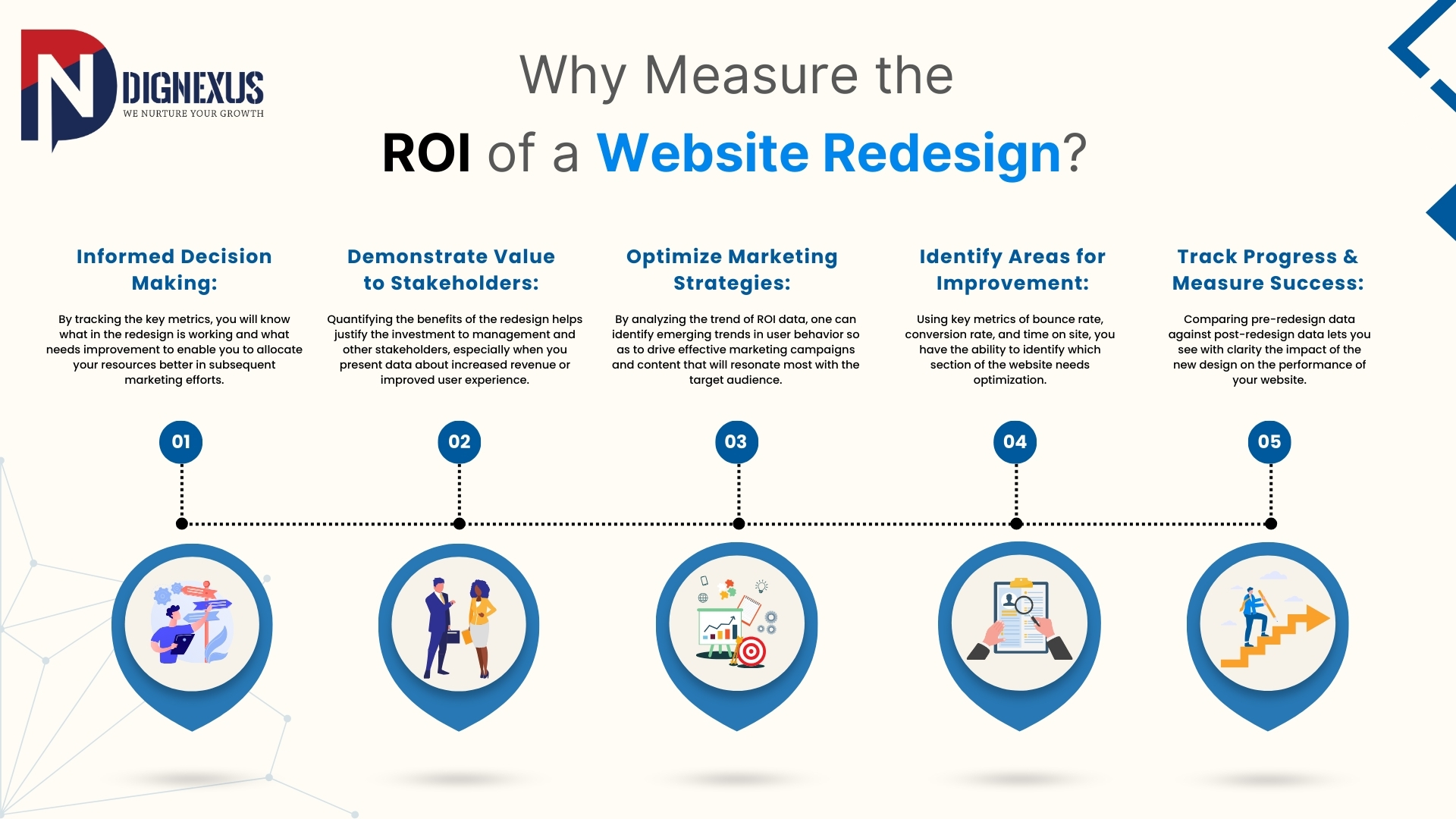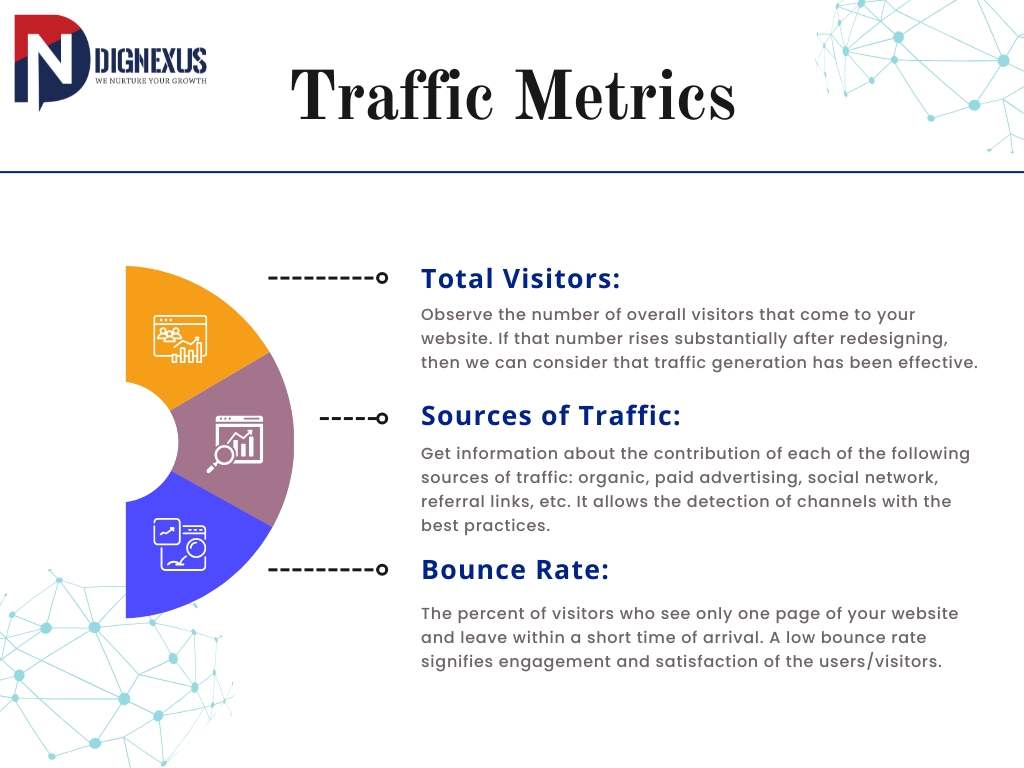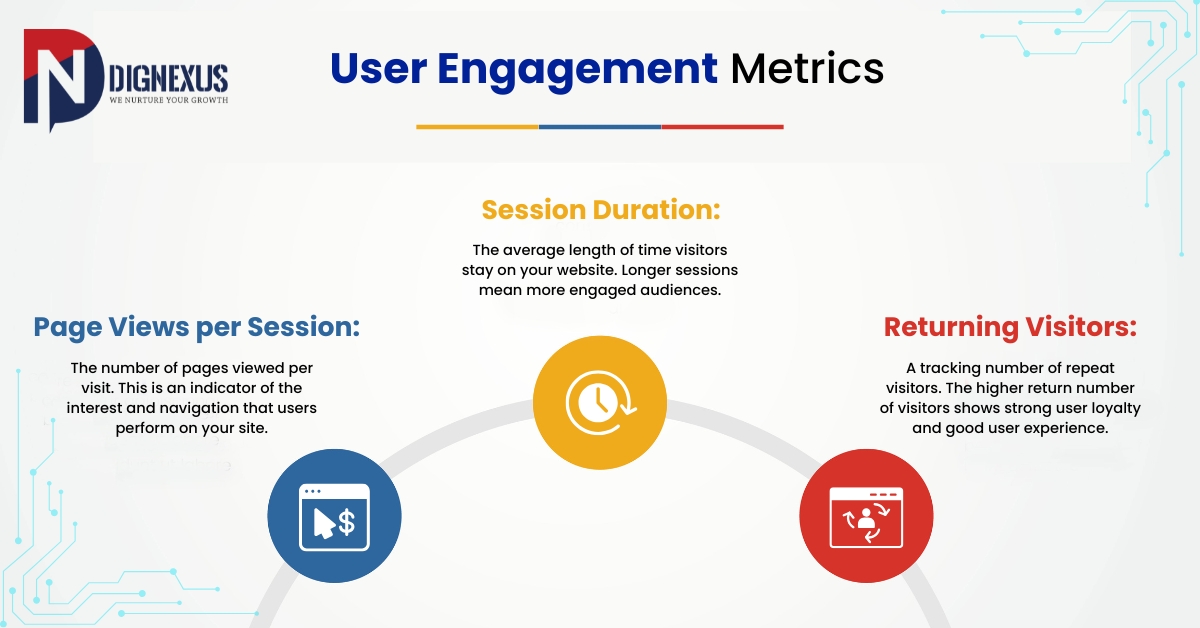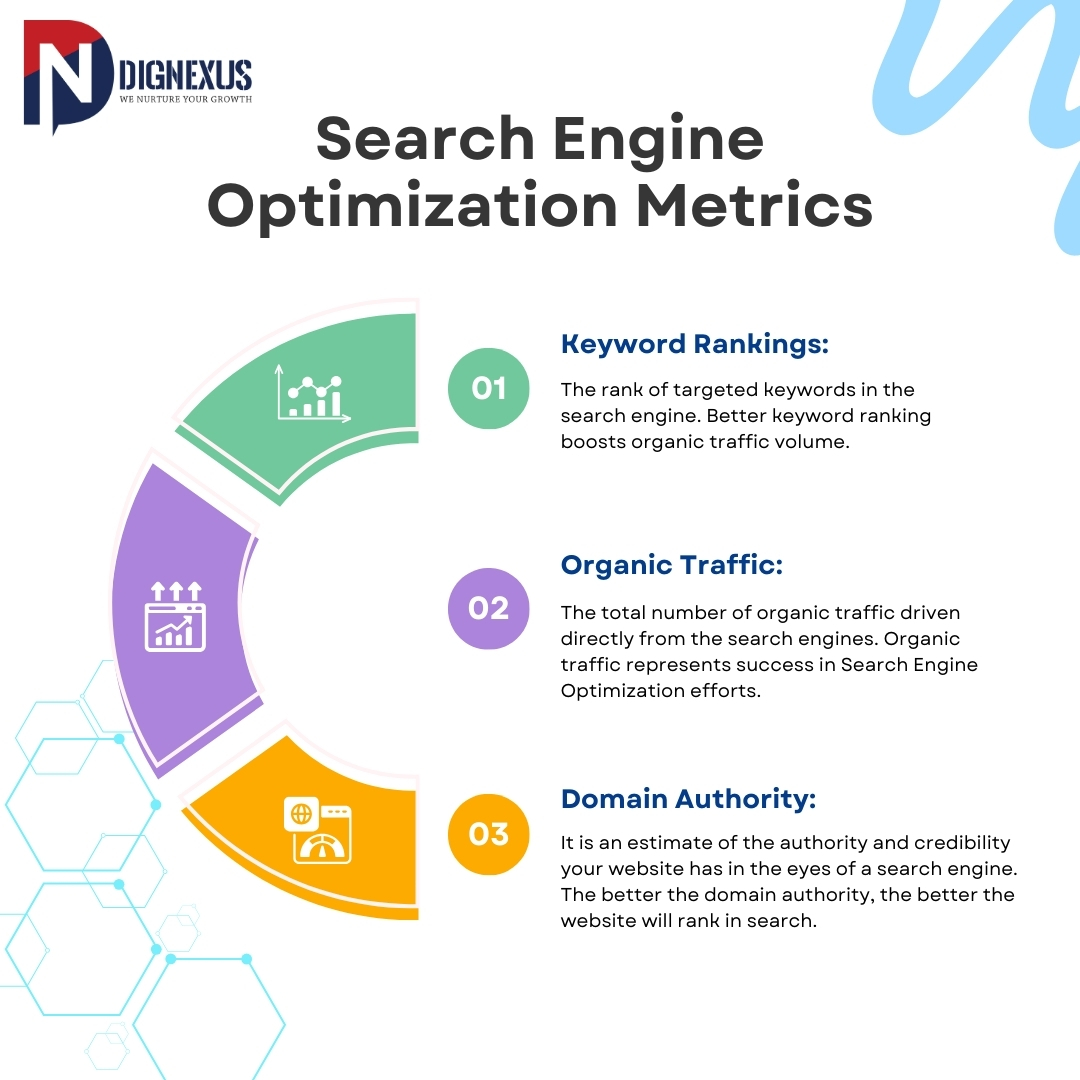
07
January
2025
How to Measure the ROI of a Website Redesign
Being one of the significant investments that a company may enter into, redesigning takes immense time, effort, and resources. Though the immediate after-effects of a redesign can be quite evident through enhanced aesthetic appearance and functionality, the million-dollar question still remains: how do you measure the ROI from a website redesign?
Understanding ROI calculation is of much essence to justify this cost for redesigning and guiding further digital strategies. In the given blog, a description about how to measure ROI is detailed, some major and must-keep-track-of metrics related to ROI, and identification of the main factors impacting your website redesign’s ROI will be discussed.
Why Measure the ROI of a Website Redesign?

Measuring the return on investment of a website redesign is important, as you can consider whether your investment into redesign gives a positive financial effect, therefore justifying the money spent, and at the same time giving significant insights into how this new design performs to achieve your broader business objectives, such as raising sales, leads, and customer interactions; basically, proving the contribution to business growth.
- Informed decision making: By tracking the key metrics, you will know what in the redesign is working and what needs improvement to enable you to allocate your resources better in subsequent marketing efforts.
- Demonstrate value to stakeholders: Quantifying the benefits of the redesign helps justify the investment to management and other stakeholders, especially when you present data about increased revenue or improved user experience.
- Optimize marketing strategies: By analyzing the trend of ROI data, one can identify emerging trends in user behavior so as to drive effective marketing campaigns and content that will resonate most with the target audience.
- Identify areas for improvement: Using key metrics of bounce rate, conversion rate, and time on site, you have the ability to identify which section of the website needs optimization.
- Track progress and measure success: Comparing pre-redesign data against post-redesign data lets you see with clarity the impact of the new design on the performance of your website.
Key ROI Metrics to Track

The website redesign may significantly affect a company’s online presence, from engaging more customers to increased revenues. However, how this adds up in terms of return on investment will have to be judged based on both the costs involved in redesigning the website and the potential and quantitative benefits that accrue. In essence, the major factors influencing the return on investment in a website redesign involve every crucial metrics that will determine its overall effectiveness and value to the business.
1. Traffic Metrics

- Total Visitors: Observe the number of overall visitors that come to your website. If that number rises substantially after redesigning, then we can consider that traffic generation has been effective.
- Sources of Traffic: Get information about the contribution of each of the following sources of traffic: organic, paid advertising, social network, referral links, etc. It allows the detection of channels with the best practices.
- Bounce Rate: The percent of visitors who see only one page of your website and leave within a short time of arrival. A low bounce rate signifies engagement and satisfaction of the users/visitors.
2. Conversion Rate

The percentage of visitors who convert, defined however a conversion makes sense for you-be that purchasing, beginning an email list, etc.-is called your conversion rate. A lot of times this metric may mirror lead close rate. Although the lead close rate can be measured over long periods of time, the conversion rate is generally used for singular campaigns. With the conversion rate metric, the conversion also doesn’t have to necessarily come from a pre-existing lead. Your conversion rate tells you how your landing pages are performing. The greater number of conversions means the bigger the chances of a positive return on investment.
Formula: conversions / number of clicks = conversion rate
3. User Engagement Metrics

- Session Duration: The average length of time visitors stay on your website. Longer sessions mean more engaged audiences.
- Page Views per Session: The number of pages viewed per visit. This is an indicator of the interest and navigation that users perform on your site.
- Returning Visitors: A tracking number of repeat visitors. The higher return number of visitors shows strong user loyalty and good user experience.
4. Search Engine Optimization Metrics

- Keyword Rankings: The rank of targeted keywords in the search engine. Better keyword ranking boosts organic traffic volume.
- Organic Traffic: The total number of organic traffic driven directly from the search engines. Organic traffic represents success in Search Engine Optimization efforts.
- Domain Authority: It is an estimate of the authority and credibility your website has in the eyes of a search engine. The better the domain authority, the better the website will rank in search.
5. User Experience Indicators

- User experience: Is the most important factor for the success of a website. It can be really enhanced with fast loading, thus reducing bounce rates. Also, it should be mobile-friendly since users are gradually shifting towards mobile devices. Accessibility standards mean that your website will be available and accessible to all users despite their disabilities.
6. Cost Efficiency Metrics

- Customer Acquisition Cost (CAC): This measures the cost of acquiring a new customer. It helps you to know how effective your marketing has been. A lower CAC post-redesign indicates that the website is doing a better job of attracting and converting visitors into customers.
- Cost Per Lead (CPL): CPL is the cost of acquiring a new lead. A lower CPL means that your website is generating leads more efficiently and can translate into increased sales and revenue.
Conclusion
Measuring the ROI of a website redesign takes a structured process and a concentration on the correct metrics. Calculating redesign cost, benefits identification and quantification, and monitoring some KPIs such as traffic, conversions, and users’ engagement will allow firms to determine the exact payback from their investment in the best possible way.
However, the real ROI is not only financial; it includes brand value, customer satisfaction, and long-term growth. Major factors that will affect ROI and some common pitfalls to avoid must be discussed in order for businesses to maximize their returns and ensure their redesigned website is a powerful tool for success.
FAQs
Q1: How to calculate the ROI of a website?
Answer: To determine the return on investment for a website, compare the money or value created from it with the costs to build, redesign, and maintain it. This will include key metrics such as conversions, sales, or leads generated by the website.
Q2: How to measure the success of a new website?
Answer: The success of a new website can be measured by the analysis of user engagement, conversion rates, traffic increase, and response from users. Other critical metrics include time on site, bounce rate, and lead generation.
Q3: What does the ROI stand for?
Answer: ROI means Return on Investment. It refers to the profitability or efficiency of an investment, considering gains or benefits weighed against associated costs.
Q4: What is considered a good ROI for SEO?
Answer: A good ROI for SEO ranges from 5x to 10x of the investment. It will be dependent on the industry and competition, but most essentially on how well the SEO strategy is paying off with organic traffic and conversions.
Q5: What is a good ROI percentage for a project?
Answer: The percentage that can be called good varies for different industries; however, in general, anything returning between 20 to 30 percent may be considered strong. Generally speaking, projects with sustained positive returns surpassing the cost may be considered successful.


